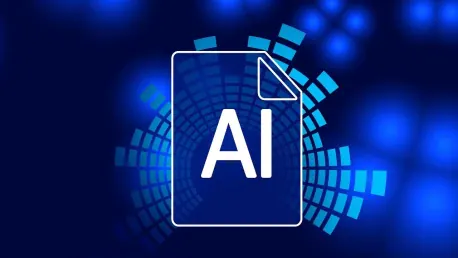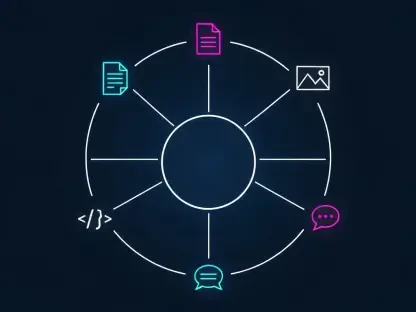Red Hat, a leader in open source software, has recently announced its acquisition of Neural Magic, a company at the forefront of machine learning technology. This strategic move is set to revolutionize AI accessibility by reducing the reliance on expensive GPUs for AI workloads, making advanced AI tools more accessible to a broader range of organizations.
Red Hat’s Vision for AI Democratization
Commitment to Open Source
Red Hat has long been committed to open source software, and this acquisition aligns perfectly with its mission to democratize technology. By integrating Neural Magic’s innovations, Red Hat aims to make AI more accessible and affordable for businesses of all sizes. This move is expected to lower the barriers to entry for AI adoption, enabling more organizations to leverage the power of machine learning. This is particularly significant for smaller companies and startups that may lack the financial resources to invest in high-cost GPUs traditionally necessary for AI workloads.
Furthermore, Red Hat’s dedication to open source software means that this newly acquired technology will be widely available, allowing various organizations to benefit from advanced AI capabilities without the hefty price tag. The open source community stands to gain from Neural Magic’s contributions, fostering an environment of shared innovation and progress. By providing an accessible framework for AI development, Red Hat is poised to lead a new era in machine learning where technological advancements are no longer confined to a few well-funded entities.
Reducing Dependency on GPUs
One of the most significant aspects of Neural Magic’s technology is its ability to run sophisticated machine learning algorithms on conventional CPUs instead of costly GPUs. This shift could drastically reduce the costs associated with AI implementation, making it feasible for companies with limited financial resources to adopt AI solutions. Techniques like pruning and quantization play a crucial role in this transition, optimizing models to run efficiently on widely available hardware.
Pruning involves strategically removing unnecessary neurons and connections from a neural network, thus reducing the computational load without compromising the performance of the AI models. Quantization, on the other hand, converts the neural network’s weights from floating-point numbers to lower precision integers, significantly decreasing the memory footprint and computational requirements. Together, these techniques enable advanced AI applications to operate on lower-cost hardware, democratizing access to powerful machine learning tools. This innovation can lead to the proliferation of AI across diverse sectors, from healthcare and finance to manufacturing and retail, heralding a new wave of technological transformation.
Neural Magic’s Technological Innovations
The vLLM Project
Neural Magic’s open source vLLM project on GitHub has garnered significant attention for its high-throughput and memory-efficient inference and serving engine for Large Language Models (LLMs). These models are essential for advancements in AI, particularly in natural language processing. Traditionally, LLMs require immense computational power provided by GPUs, but Neural Magic’s technology enables them to run effectively on CPUs, broadening their accessibility.
The vLLM project’s ability to provide efficient performance on standard CPUs means that more organizations can utilize the power of LLMs without the need to invest in expensive GPU infrastructure. This is particularly beneficial for industries that rely heavily on natural language processing, including customer service, content creation, and data analysis. As a result, businesses can implement advanced AI capabilities into their operations, enhancing their efficiency and offering more innovative solutions to their clients. By making LLMs more accessible, Neural Magic’s technology stands to impact a wide array of applications, pushing the boundaries of what is possible with AI today.
Techniques for Efficiency
Neural Magic’s founders have focused on optimizing machine learning models through techniques such as pruning and quantization. Pruning involves eliminating unnecessary connections within a neural network, reducing its size and computational overhead without compromising performance. Quantization further reduces the model’s size, enabling it to operate on platforms with limited memory. These innovations are pivotal in making AI more accessible and cost-effective.
Pruning allows neural networks to maintain high accuracy while operating more efficiently, making them suitable for deployment on a wider range of hardware, from mobile devices to edge computing platforms. Quantization, by compressing data and reducing precision, further enhances model performance on resource-constrained systems. These techniques enable the deployment of sophisticated AI models in environments where computational resources are limited, thus sparking innovation across industries previously unable to implement advanced AI systems. From healthcare diagnostic tools to smart home devices, the impact of these optimization techniques extends far beyond traditional AI applications, contributing to the broader goal of making AI technology universally available.
The Role of IBM in AI Integration
IBM’s Strategic Alignment
As the parent company of Red Hat, IBM has embraced these innovations and integrated them into its broader strategy. IBM’s product management lead, Kareem Yusuf, has highlighted the opportunity to help enterprise clients integrate their data with large language models. This integration allows businesses to harness the power of LLMs while ensuring their data remains secure and under control.
By leveraging Neural Magic’s technology, IBM can offer AI solutions that are not only powerful but also cost-effective, providing enterprise clients with the tools to enhance their operations significantly. The integration of LLMs with enterprise data enables businesses to extract valuable insights and improve decision-making processes. Moreover, IBM’s strategic alignment ensures that the technology innovations from Neural Magic align with IBM’s overarching goals of expanding AI accessibility and innovation. This synergy between Red Hat and IBM sets the stage for a cohesive approach to advancing AI capabilities across diverse industries.
InstructLab and IBM Granite
In alignment with this vision, IBM has developed InstructLab, an open-source project offering tools to modify LLMs without the need for complete retraining. This tool, along with IBM Granite, a foundational AI model tailored for enterprise data sets, showcases IBM’s commitment to facilitating the scalable deployment of AI across varied environments. These tools are designed to make AI more adaptable and customizable to specific tasks, further enhancing its accessibility.
InstructLab provides enterprises with the flexibility to fine-tune LLMs based on their unique requirements, cutting down on the time and resources typically needed for full model retraining. IBM Granite complements this by offering a robust AI foundation specifically designed for enterprise-level data, ensuring optimal performance and scalability. These tools exemplify IBM’s dedication to breaking down barriers to AI implementation, supporting businesses in their AI adoption journey. By creating an ecosystem where AI is both accessible and adaptable, IBM and Red Hat are pioneering a new era of enterprise AI usage, empowering companies to harness the full potential of machine learning while maintaining control and security over their data.
The Future of AI Accessibility
Sparsification and Cost Reduction
Red Hat’s advocacy for sparsification, which involves strategically removing non-essential connections in AI models, is set to transform the landscape of machine learning. By reducing the need for high-performance GPUs, these techniques can drastically cut costs, speed up inference processes, and expand the range of hardware that can handle AI workloads effectively. This approach promises to make AI more accessible to a wider audience.
The ability to deploy efficient AI models on standard hardware opens up new possibilities for innovation across sectors that were previously hindered by the high costs and limited availability of GPU resources. Companies can now implement AI-driven solutions more rapidly and at a fraction of the cost, leading to increased productivity and competitiveness. Furthermore, the reduced computational requirements also contribute to energy savings and a smaller environmental footprint, aligning with broader sustainability goals. This move towards more efficient, cost-effective AI is poised to accelerate the adoption of machine learning in areas as diverse as finance, healthcare, education, and beyond.
Scalable AI Solutions
Red Hat, a prominent name in the open source software industry, has recently taken a significant step by acquiring Neural Magic, a company known for its cutting-edge advancements in machine learning technology. This acquisition is poised to bring about a substantial shift in the artificial intelligence (AI) landscape. By integrating Neural Magic’s innovative solutions, Red Hat aims to democratize AI, making these technologies more accessible to a wider array of organizations. Traditionally, advanced AI workloads have depended heavily on costly graphics processing units (GPUs). However, Neural Magic’s technology reduces this dependency, offering efficient and powerful AI capabilities without the need for expensive hardware. As a result, businesses of various sizes and from different sectors can now leverage advanced AI tools without the substantial financial burden typically associated with high-end GPU requirements. This move not only solidifies Red Hat’s position as a leader in the open-source community but also promotes a more inclusive growth of AI technologies, thereby accelerating innovation across multiple industries.









